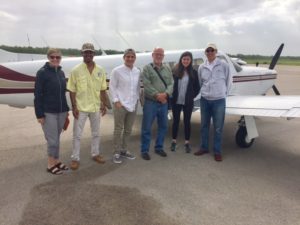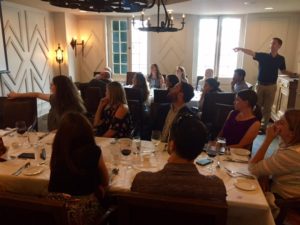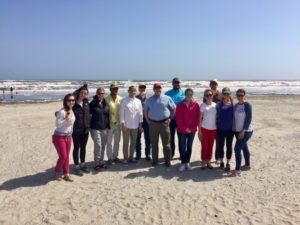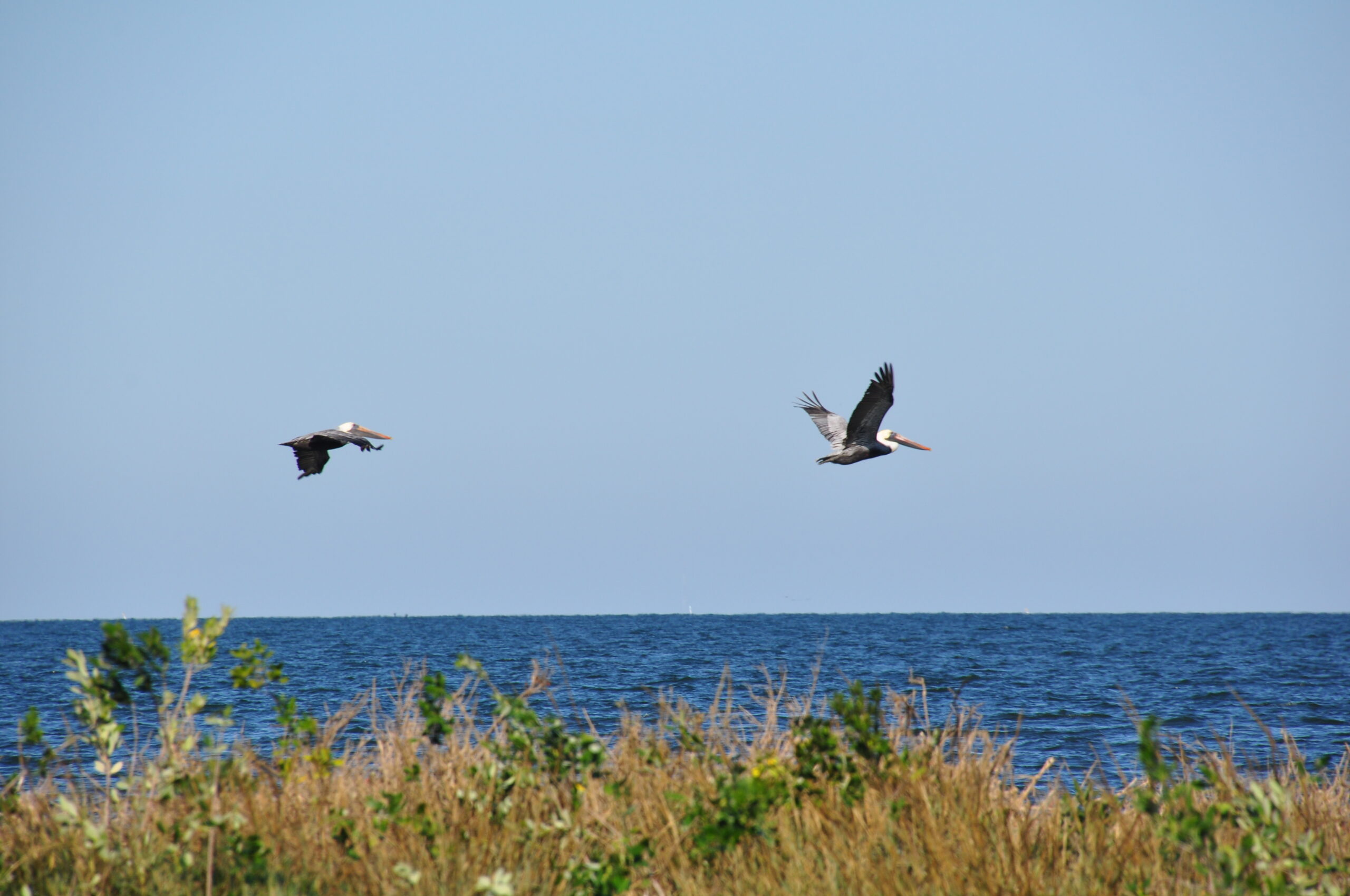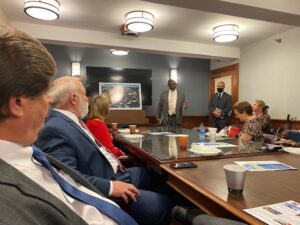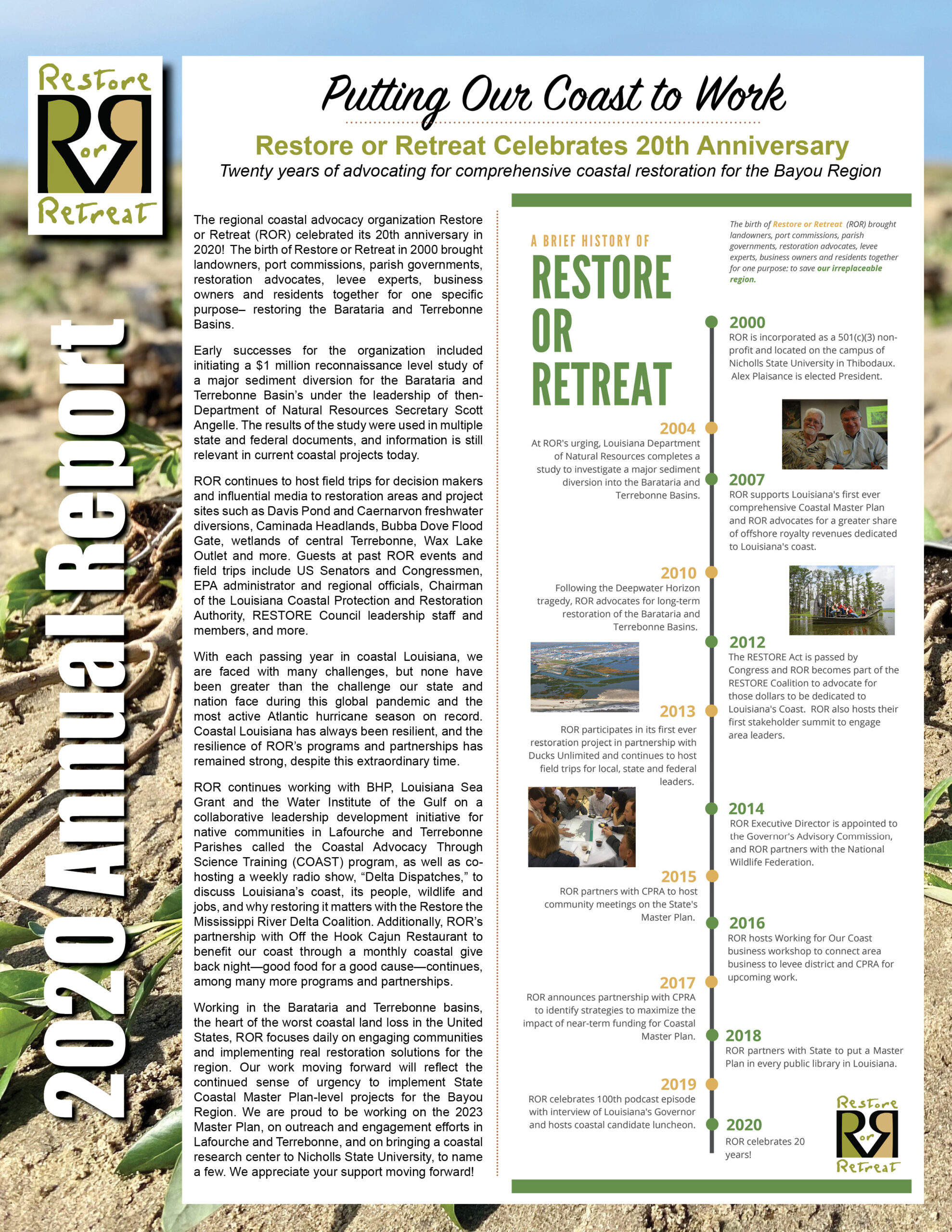Coastal Louisiana Congressional Staff Trip

March Congressional Fly-In
During the last week of March, Restore or Retreat, along with the Louisiana Coastal Protection and Restoration Authority, the Greater Lafourche Port Commission, and South-Wings welcomed six congressional staffers to Louisiana to take part in ROR’s Coastal Louisiana Congressional Staff Trip. Participants of the trip included the offices of Senator John Kennedy, Senator Roger Wicker of Mississippi, Congressman Steve Scalise, Congressman Garret Graves, and House Committee on Natural Resources.

Erin Plitsch of CPRA showing core sampling results at Davis Pond Freshwater Diversion
The objective of this educational and field-immersed venture was to provide a solid foundation of understanding for Louisiana’s coast, the fundamentals of the environment/culture reliance, the power and dependence on the Mississippi River, and how the Mississippi River Delta supplies economic and environmental benefits to our leading oil and gas hub, Port Fourchon, which services the country’s energy industry. In order to successfully relay these primary components of the trip, the congressional staffers were given a firsthand look into our coastal crisis and methods our state has taken to address the issues—by both air boat and a bird’s eye view by coastal flight. Throughout the duration of the trip, the staffers were educated on Louisiana’s land loss and flood risk the State’s Coastal Master Plan to address it; learned about Gulf-wide collaboration and federal agency involvement in the effort; and informed on the national economic importance of restoration, specifically by viewing Port Fourchon’s operations, development and involvement in restoration activities.
The trip began with an air boat tour of the Davis Pond Freshwater Diversion. This diversion project was designed to divert fresh water, with its accompanying nutrients and sediments, from the Mississippi River into the rapidly eroding Barataria Basin—reducing saltwater intrusion and establishing favorable salinity conditions, thus combating land loss. The Davis Pond tour included viewing of the outfall area, as well as observing benefits of proactive conservation management and possible legislation needed for future adaptive management and appropriations. Following the Davis Pond tour was a dinner briefing of a historical overview of the Mississippi River Delta degradation and restoration by Restore the Mississippi River Delta Coalition; aspects learned from existing diversions, as well as a discussion on the effects the history has on conversation management today, potential future restoration opportunities, and possible future legislative requests by the Lake Pontchartrain Basin Foundation. Dinner concluded with a briefing on Louisiana’s Coastal Master Plan by the Governor’s Office of Coastal Actvities.
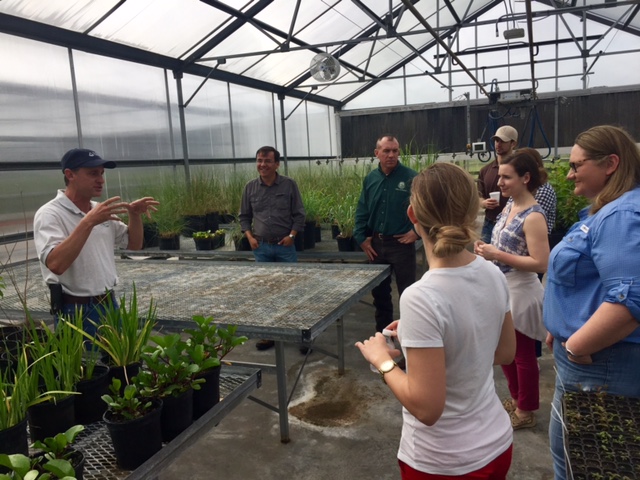
Garrett Thomassie at USDA NRCS giving tour of Plant Materials Center in Galliano, La.
Day two of the trip began with a fly-over of southeast Louisiana which was piloted by partner organization, South-Wings. Leaving from the Galliano airport, the flight course consisted of a portion of the Barataria Basin, proposed site for Mid-Barataria Sediment Diversion, and west over the Morganza to the Gulf levee system in Terrebonne Parish. After crossing the eroding marshes of eastern Terrebonne, staffers were given aerial views of the growing deltas of the Atchafalaya River and Wax Lake Outlet. Headed back east, the route then included a fly-over of the barrier islands and constructed Caminada Headlands project. Subsequent to the fly-over was a tour of the USDA NRCS Plant Materials Center which included viewing plant propagation facilities and discussions on developing biological solutions to coastal restoration challenges, in addition to Roseau Cane presentations by Louisiana Department of Wildlife and Fisheries and LSU AgCenter. The remainder of the day’s events took place in Grande Isle and began with a crawfish boil lunch hosted by Port Fourchon, then a presentation on energy and environment. The program explained how Port Fourchon plays a strategic role in furnishing the country with 18% of its entire oil supply. While the Greater Lafourche Port Commission actively pursues its purpose of stimulating commercial development, it accepts as part of its mission the responsibility of acknowledging the
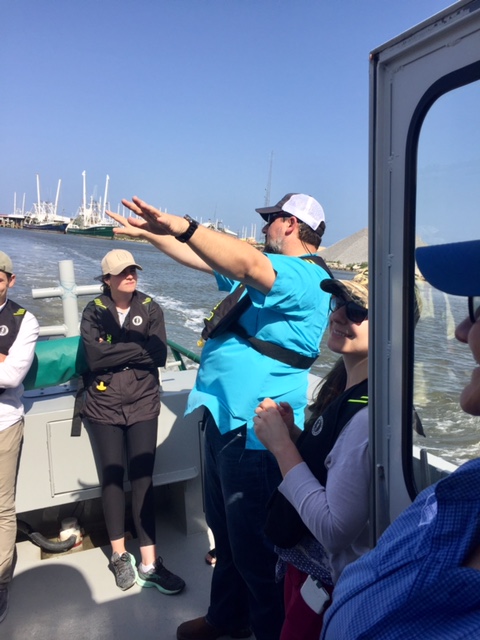
Chett Chaisson of GLPC leading boat tour of Port Fourchon facilities
environmental value of the setting in which Port Fourchon is located. The Port Commission works diligently to protect and restore the coastal landscape and habitats that surround it. In between Port Fourchon and Grande Isle is the Caminada Headlands Beach and Dune Restoration Project. Congressional staffers were taken to the 14-mile-long undeveloped beach that stretched from West Belle Pass to Caminada Pass on the east, protecting Port Fourchon, providing critical beach and dune habitat for nesting shorebirds, and accommodating culturally significant recreational activities in the form of fishing, crabbing, and beachcombing. The trip concluded with a boat tour of Port Fouchon which gave an up-close look at current development and large scale offshore service facilities, as well as the first LNG vessel fueling station in the United States.
Louisiana’s land loss is severe; the projects slated to aid in our coastal crisis through the Louisiana Coastal Master Plan are critical to the sustainable and healthy future of Louisiana’s coast. As we get closer to implementing these cornerstone projects, we want Congressional staff members to have opportunities to see the exciting possibilities associated with success of these projects, and to ask any questions about how the State of Louisiana is working with partners and state and federal agencies to proactively address stakeholder concerns.
- Staffers boarding plane for coastal fly over
- Group learning about Louisiana’s Coastal Master Plan
- Group at Caminada Headlands Beach and Dune Restoration Project
